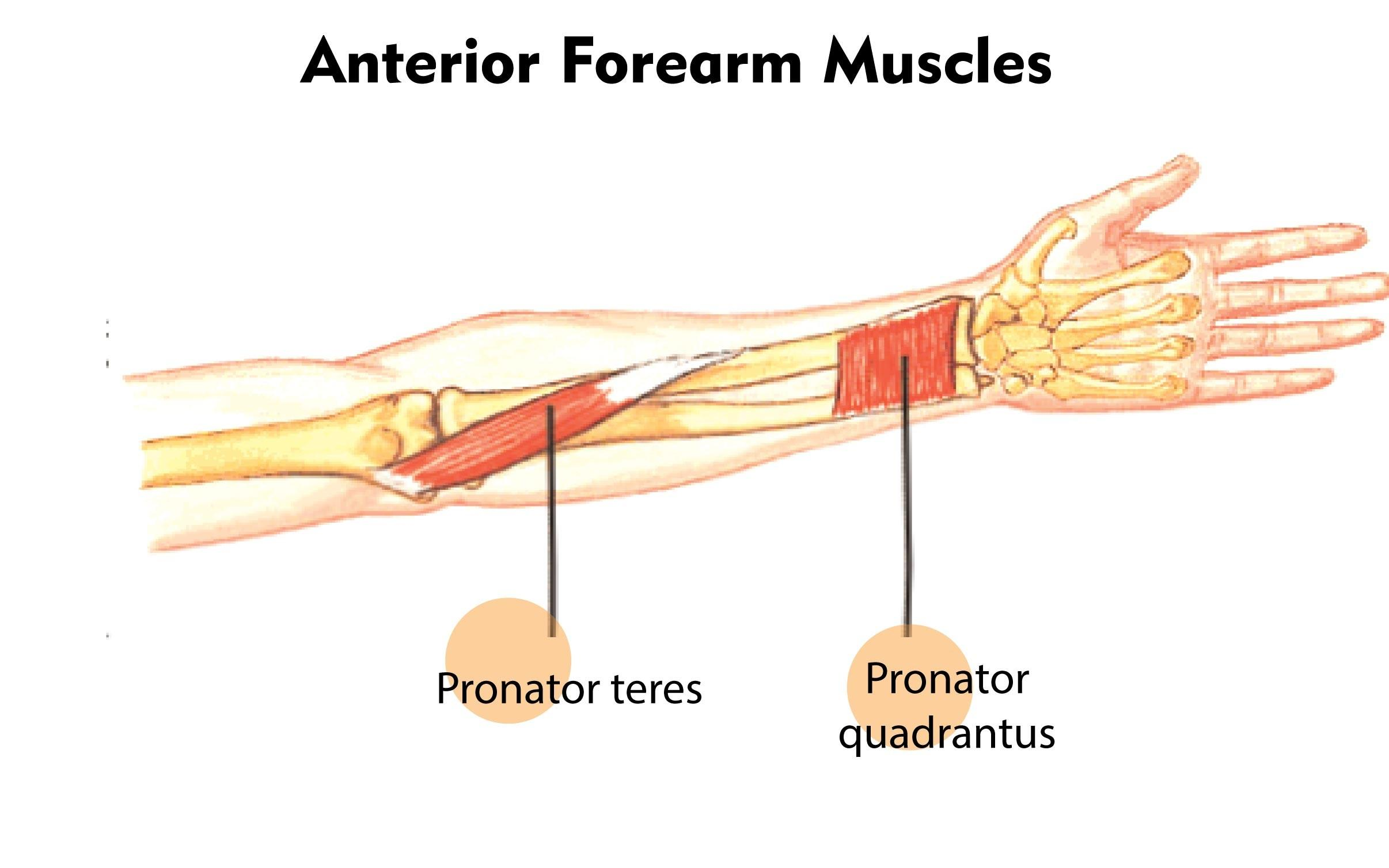
Forearm is rotated to turn palm downward or backward by _ _ _ _ _ _ muscles
(a) Adductor
(b) Abductor
(c) Pronator
(d) Extensor
(e) Flexor
Answer
576k+ views
Hint: They are a muscle located mainly within the forearm that serves to rotate the forearm. They also weakly flex the elbow or assist in flexion at the elbow when there's strong resistance.
Complete answer:
The forearm is rotated to show the palm downward or backward by Pronator muscles. Pronator teres pronates the forearm, turning the hand posteriorly. If the elbow is flexed to a right angle, then the pronator teres will turn the hand in order that the palm faces inferiorly. It’s assisted during this action by the pronator quadratus.
The pronator teres has two heads—humeral and ulnar. - The humeral head, the larger and more superficial, rises from the medial supracondylar ridge instantly superior to the medial epicondyle of the humerus, and from the common flexor tendon (which rises from the medial epicondyle) . - The ulnar head (or ulnar tuberosity) may be a thin fasciculus, which arises from the medial side of the processus coronoideus of the ulna and joins the preceding at an oblique angle.
The adductors are a gaggle of muscles because the name suggests, that primarily function to adduct the femur at the hip. The hip abductors are important for continuing stable when walking or standing on one leg. Flexor may be a muscle, which causes bending of the forearm towards the upper arm by biceps. Extensor is that muscle that causes straightening of the bent forearm.
 So, the correct answer is ‘(c) Pronator’.
So, the correct answer is ‘(c) Pronator’.
Note: Pronator teres syndrome is one explanation for wrist pain. It’s a kind of neurogenic pain. Patients with the pronator teres syndrome have paralysis in median nerve distribution with monotonous pronation/supination of the forearm, not flexion and addition of the elbow. Early fatigue of the forearm muscles is understood with repetitive stressful motion, mainly pronation.
Complete answer:
The forearm is rotated to show the palm downward or backward by Pronator muscles. Pronator teres pronates the forearm, turning the hand posteriorly. If the elbow is flexed to a right angle, then the pronator teres will turn the hand in order that the palm faces inferiorly. It’s assisted during this action by the pronator quadratus.
The pronator teres has two heads—humeral and ulnar. - The humeral head, the larger and more superficial, rises from the medial supracondylar ridge instantly superior to the medial epicondyle of the humerus, and from the common flexor tendon (which rises from the medial epicondyle) . - The ulnar head (or ulnar tuberosity) may be a thin fasciculus, which arises from the medial side of the processus coronoideus of the ulna and joins the preceding at an oblique angle.
The adductors are a gaggle of muscles because the name suggests, that primarily function to adduct the femur at the hip. The hip abductors are important for continuing stable when walking or standing on one leg. Flexor may be a muscle, which causes bending of the forearm towards the upper arm by biceps. Extensor is that muscle that causes straightening of the bent forearm.

Note: Pronator teres syndrome is one explanation for wrist pain. It’s a kind of neurogenic pain. Patients with the pronator teres syndrome have paralysis in median nerve distribution with monotonous pronation/supination of the forearm, not flexion and addition of the elbow. Early fatigue of the forearm muscles is understood with repetitive stressful motion, mainly pronation.
Recently Updated Pages
Why are manures considered better than fertilizers class 11 biology CBSE

Find the coordinates of the midpoint of the line segment class 11 maths CBSE

Distinguish between static friction limiting friction class 11 physics CBSE

The Chairman of the constituent Assembly was A Jawaharlal class 11 social science CBSE

The first National Commission on Labour NCL submitted class 11 social science CBSE

Number of all subshell of n + l 7 is A 4 B 5 C 6 D class 11 chemistry CBSE

Trending doubts
Differentiate between an exothermic and an endothermic class 11 chemistry CBSE

10 examples of friction in our daily life

One Metric ton is equal to kg A 10000 B 1000 C 100 class 11 physics CBSE

Difference Between Prokaryotic Cells and Eukaryotic Cells

State the laws of reflection of light

Explain zero factorial class 11 maths CBSE




